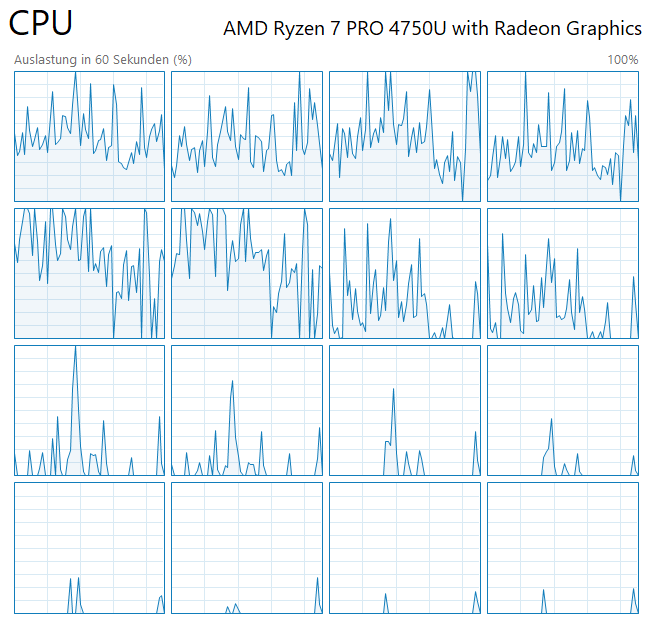
Lenovo ThinkPad X13 AMD Ryzen 7 Pro 4750U 1.7GHz / 16GB RAM / 1TB SSD review | 119 facts and highlights

Lenovo ThinkPad L15 Gen1 15.6" Notebook AMD Ryzen 7 4750U 8GB 256GB SSD W10P64 - A-Power Computer Ltd.

AMD Ryzen 7 Pro 4750U, Ryzen 5 Pro 4650U, and Ryzen 3 Pro 4450U now official and set to debut on the Lenovo ThinkPad T14, T14s, X13, and more - NotebookCheck.net News

Lenovo ThinkPad L15 Gen 1 - 15.6" - Ryzen 7 Pro 4750U - 16 Go RAM - 512 Go SSD - Français (Langue : français / région : Canada) | Grand & Toy

HP 13.3" ProBook x360 435 G7 Multi-Touch 2-in-1 Laptop, AMD Ryzen 7 PRO 4750U, 16GB DDR4 RAM, 512GB SSD, AMD Radeon Vega Graphics, Windows 10 Pro (226V3UC#ABA) (used) - Walmart.com

Lenovo ThinkPad X13 Gen 1 20UF - AMD Ryzen 7 Pro 4750U / 1.7 GHz - Win 10 Pro 64-bit - Radeon Graphics - 16 GB RAM - 1 TB SSD TCG

USED) LENOVO Thinkpad T14 R7-4750U PRO 4G 128-SSD NA AMD Radeon Graphics 14inch 1920x1080 Business Laptop 95% | C2 Computer

LENOVO THINKPAD T14 AMD R7-4750U 14" 16Go 512Go SSD Windows 10 (20UD003CFE) à 16 083,00 MAD - linksolutions.ma MAROC

Amazon.com: Lenovo ThinkPad P14s 14" FHD Thin Light Mobile Workstation Business Laptop (AMD 8-core Ryzen 7 Pro 4750U (Beat i7-10750H), 16GB RAM, 1TB SSD) Backlit, Fingerprint, WiFi 6, Win 10 Pro, IST

AMD Ryzen 7 PRO 4750U processor spotted on 3DMark could soon turn up in new Lenovo ThinkPad laptops - NotebookCheck.net News

The 7 nm AMD Ryzen 7 Pro 4750U destroys the Core i7-10810U and Intel has no answer at the moment - NotebookCheck.net News

Lenovo ThinkPad T14s Gen 1 14" FHD IPS Laptop AMD Ryzen 7 PRO 4750U 16GB 256GB SSD Smart Card Reader Free Sync Backlit Keyboard Windows 11 Pro Black - 20UJS3HT05 : Amazon.co.uk:

Amazon.com: Lenovo ThinkPad T14 Gen 1 14" Ryzen 7 PRO 4750U 8 Cores, FHD (1920x1080) Touch 300 nits,16GB DDR4 3200 RAM,512GB PCIe NVMe SSD, Win10Pro, Backlit , Fingerprint Reader

USED) LENOVO Thinkpad T14 R7-4750U PRO 4G 128-SSD NA AMD Radeon Graphics 14inch 1920x1080 Business Laptop 95% | C2 Computer










